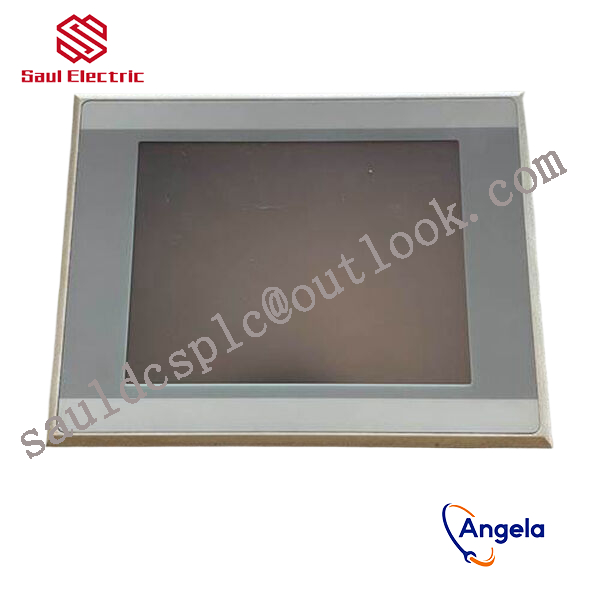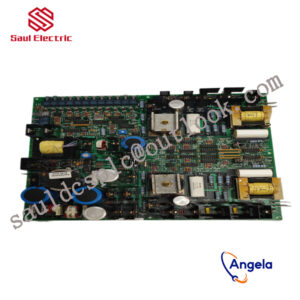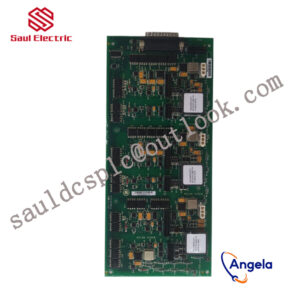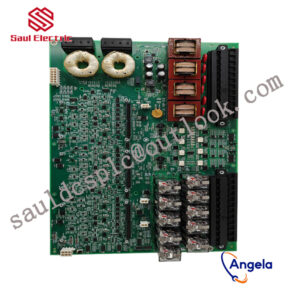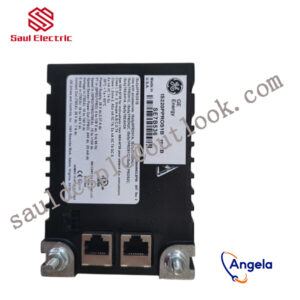Description
- 32-bit DSP digital control mode
- Low vibration, low noise, low power consumption
- Maximum output current 3A/phase
- Adopting CAN bus and supporting standard CANopen communication protocol, it can load up to 127 devices
- Supports three modes: protocol position control, speed control, and periodic position control
- Current setting, subdivision, motor start stop control, and real-time monitoring of motor operation can be achieved through the bus
- 2-channel optoelectronic isolation programmable input interface
medical equipment, various types of robots, robotic arms, automated production lines, and various CNC machine tools.
Design of ABB industrial robot deburring and grinding workstation based on RobotStudio simulation softwareintroductionAs an official offline programming software for ABB robots, Robotstudio not only has powerful simulation and offline programming functions, but also has automatic path generation function and simulation monitoring collision function. It can realize the simulation of robots in real scenes, so as to timely update existing robot programs. optimize. On-site teaching programming will affect normal production activities on site.The application of Robotstudio software offline programming can reduce on-site teaching and programming time.As a traditional process of mechanical processing, deburring and grinding have a wide range of applications. However, for a long time, in the process of manual deburring and polishing, there have been differences in operations between workers. The manual operation is not repeatable and the deburring effect is unstable, which has seriously affected the surface quality and service life of the finished product; and the working environment There is a large amount of dust floating in the air and the conditions are harsh, seriously endangering the physical and mental health of workers. With the proposal of “Made in China 2025”, intelligent manufacturing production has become an important development direction for the transformation and upgrading of the future manufacturing industry. The use of industrial robot automated production lines for repetitive batch processing operations can not only greatly improve production efficiency, but also greatly improve product quality. Yield and production stability. Therefore, before designing the robot polishing program, if the shape, size and polishing amount of the workpiece to be polished are known, the robot offline program can be written on the Robotstudio software according to the existing conditions, thereby improving the efficiency of on-site programming.1Design task descriptionThis task is to create a new simulation workstation in ABB robot simulation software Robotstudio. The corresponding training equipment in reality is the Yalong YL-l360A industrial robot deburring and grinding system control and application equipment. The industrial robot selection and method of the simulation workstation are The grinding head installed on the blue plate refers to the Yalong YL-l360A industrial robot deburring and grinding system control and application equipment, and the workpiece is customized. The ABB industrial robot deburring and grinding workstation simulation training process includes: creating a workstation, setting up tools, creating smart components, creating tool coordinate systems, creating trajectories, programming, simulation design, and verification.2 Task implementation2.1 Create a workstationImport the robot: First, create a new simulation workstation in the Robotstudio software. The workstation name is self-named, and then import the corresponding industrial robot IRB1410. The robot position remains unchanged by default. Create a robot system, modify the system options, check 709-1DeviceNetMaster/s1ave, select Chinese as the language, and leave the other options unchanged by default, then click Confirm to create the robot system. After the robot system is created, hide the industrial robot IRB1410 to facilitate subsequent workstation operations.Import workpiece: The workpiece here is customized, and the corresponding workpiece is selected according to the actual situation on site. This article uses the original workpiece Curvet in Robotstudio software. After importing it into the workstation, according to the reachable range of the robot, just place the workpiece at a suitable location within the reachable range of the robot, as shown in Figure 1.Import the grinding rotor tool: First, create a new grinding rotor tool component – rotor – copy (2) and rotor – copy (2) in the so1idworks 3D software. The rotor – copy (2) is a rotatable grinding rotor. —The copy is the tool body, which is the grinding rotor frame, and is installed on the robot flange, as shown in Figure 2.2.2 Setting toolsFirst, move the rotatable grinding rotor and the tool body to the local origin based on point A, and adjust the initial tool angle so that the grinding rotor is parallel to the x-axis of the geodetic coordinate system, as shown in Figure 3. Set the local origin of the tool body at this time, change the position x, y,: to 0, 0, 0, and change the direction x, y,: to 0, 0, 0.Figure 3 Tool settingsCreate a new frame at point B of the tool body, name it “frame l”, and adjust the direction of frame l so that the axis is perpendicular to the plane of point B. The specific direction is shown in Figure 4.
XNE-GWBR-2ETH-IP Eaton human-machine touch screen
XN-B4T-SBBC Eaton human-machine touch screen
XV-303-15-C00-A00-1C Human Machine Interaction
XV-102-B5-35TQR-10 Eaton human-machine touch screen
SW-GALILEO EATON HMI Human Machine Interface
XV-442-57CQB-1-1ABVAR03 Human Machine Interaction
XV-460-12TSB-1-10 EATON Touch Panel
MV4-690-TA3-XX3 Capacitive touch screen and resistive touch screen
XP-702-C0-12TXI-10 Capacitive touch screen and resistive touch screen
XV-460-57TQB-1-50-PLC Eaton human-machine touch screen
XV-152-D6-84TVR-10 EATON Touch Panel
MC2-442-57CQB-1-1F Human Machine Interaction
XV-440-12TSB-1-10-PLC-SET EATON Touch Panel
XN-B4S-SBBC Human Machine Interaction
XV-102-B6-35TQR-10-PLC Capacitive touch screen and resistive touch screen
XT-BCB-TP-EPROM-CANOPEN EATON Touch Panel
XN-P4S-SBBC-B EATON Touch Panel
XVS-440-10MPI-1-1U EATON HMI Human Machine Interface
XV-442-57CQB-1-50 EATON Touch Panel
XN-P3S-SBB EATON HMI Human Machine Interface
XV-102-D0-57TVR-10 Intelligent operation control system
XVH-340-57MPI-1-1Q Intelligent operation control system
XV-432-57CQB-1-10 Intelligent operation control system
MC2-442-57CQB-1-21 Intelligent operation control system
XN-16DO-24VDC-0.5A-P Eaton human-machine touch screen
XN-2DI-24VDC-N Eaton human-machine touch screen
MC2-440-12TSB-1-11 EATON Touch Panel
XVH-330-57-MPI-1-10 Intelligent operation control system
XV-303-10-C00-A00-1C Intelligent operation control system

